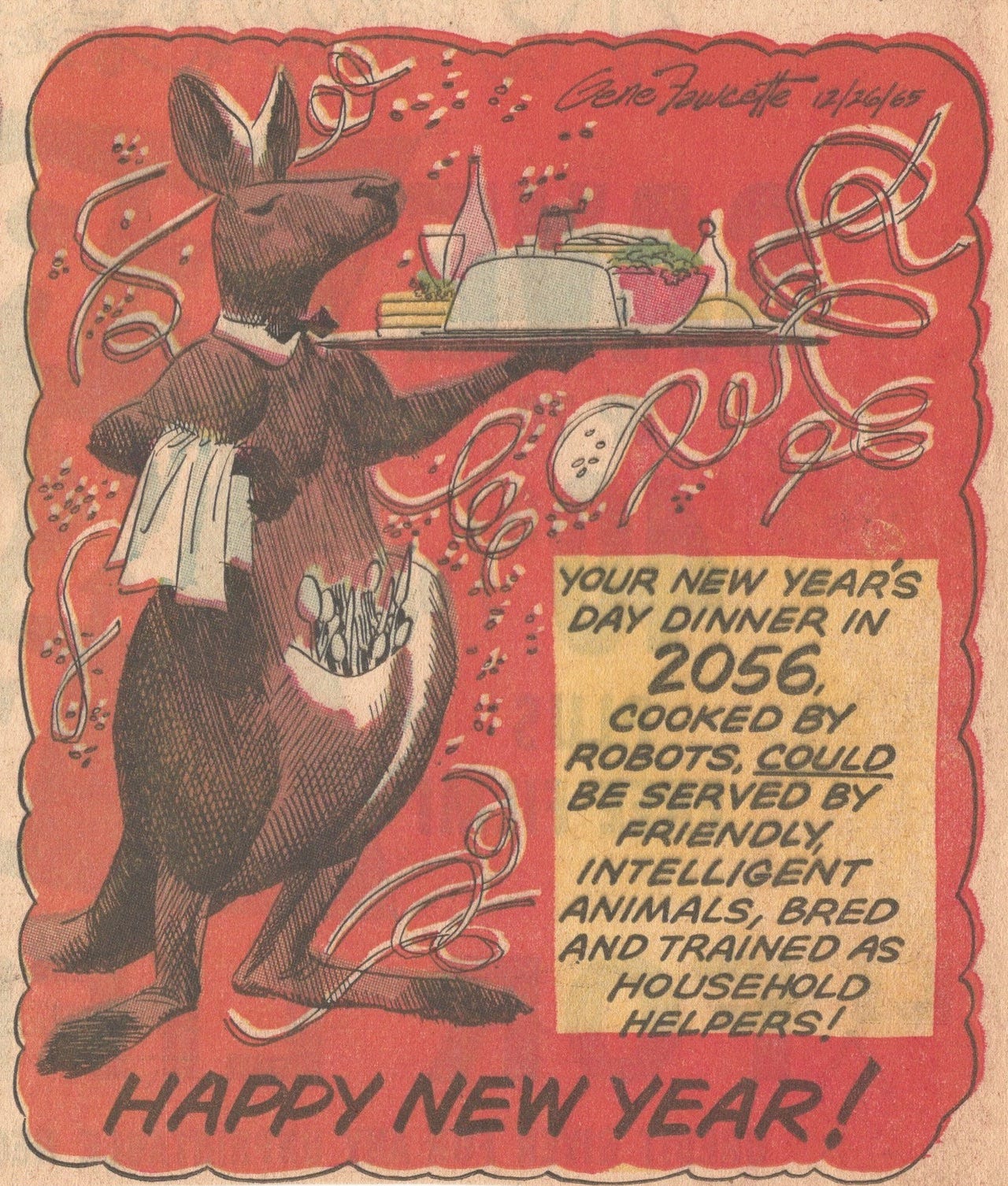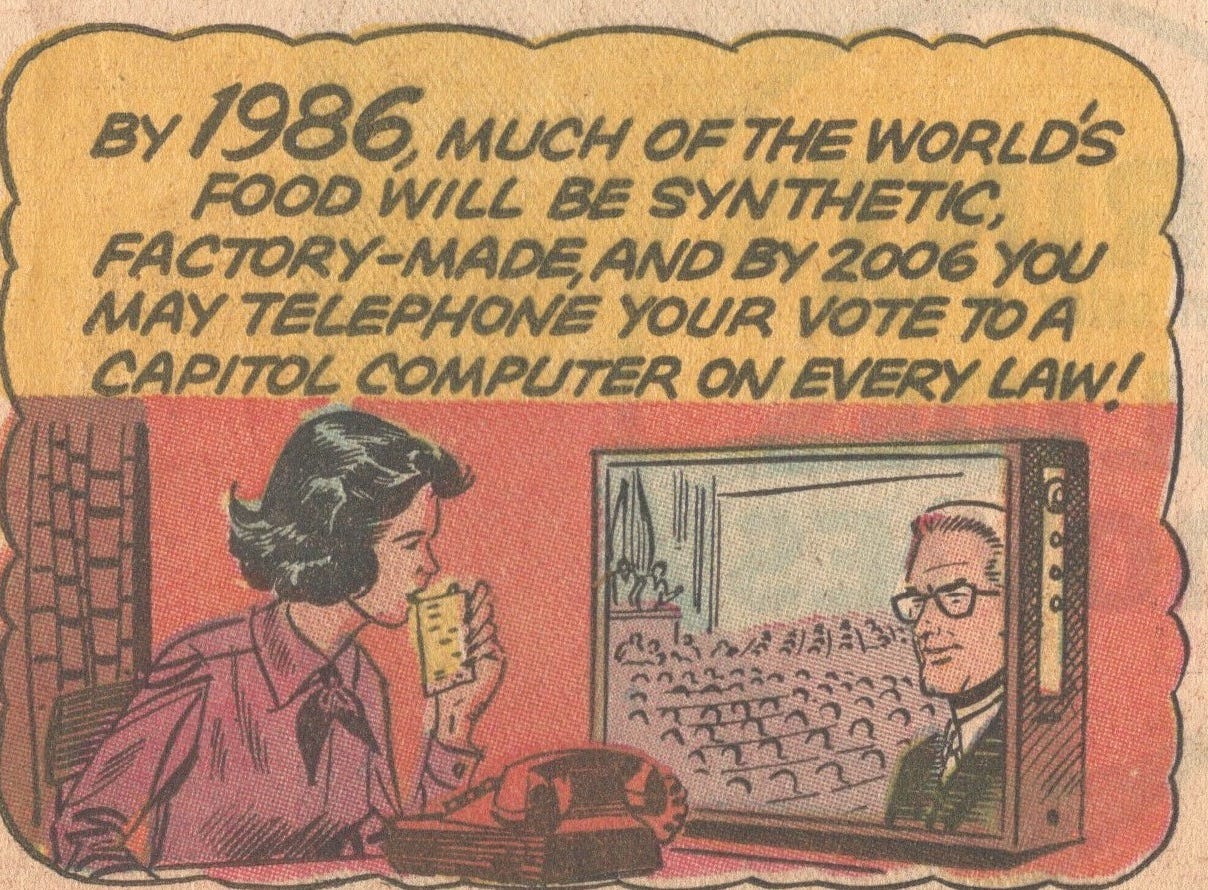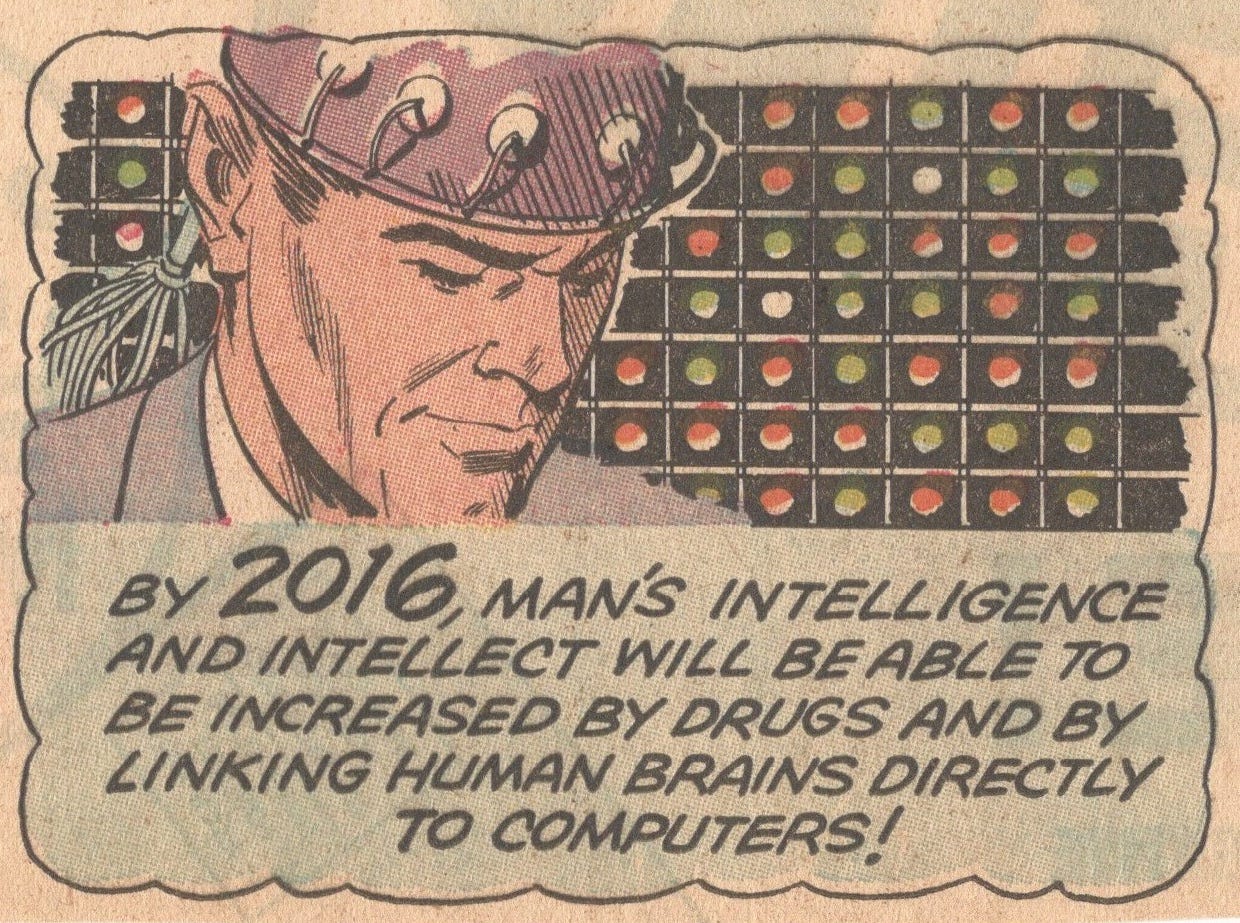I audit the predictions of Australia's most famous futurist
Bernard Salt wrote a lot about 2025. Did he get anything right?
A clever media personality once gave me advice on political forecasting. It had been passed onto him from another commentator, and likely came from someone else before that.
“When it comes to making predictions,” I was told, “go early and go often.”
The logic was that — if you guessed something correctly — you’d be able to noisily point to your own successful call, and build your reputation as an expert.
And if you got it wrong? Well, by the time your bad prediction had come home to roost, everyone would have forgotten you’d said anything at all.
It’s a tactic I’ve seen used by commentators and futurists alike.
For a bit of fun, I recently took a jaunt into the newspaper archives, to see how prominent forecasters and experts thought the first quarter of the new century would unfold.
I was not impressed. They were no more prescient than a bowl of well-stirred alphabet spaghetti.
Believe it or not, this is an established phenomenon. Studies by Dr Philip Tetlock – a world expert on social and political forecasting – have shown that there is an inverse correlation between fame and accuracy. There are a lot of contributing factors here, but essentially the media is drawn to compelling narratives which are confidently told. Accuracy doesn’t really come into play — you can’t fact check articles written about the future, after all.
But you can audit them.
Which is a good time to introduce Bernard Salt, Australia’s most prominent futurist. Salt is, of course, the man who once blithely said that it was smashed avocado brunches stopping millennials from buying a home. This particular article caused a furore, but generational potshots have been a large part of Salt’s repertoire since the late 90s.
When Salt isn’t gently kissing baby boomers on the temple and whispering into their ears about how clever they are, he’s writing predictions on Australia’s social trends.
In 2001, Salt published a book called ‘the Big Shift: Welcome to the Third Australian Culture’. In broad terms, it was about how Australia’s population distribution would drastically change in two or three decades, as people moved en masse to coastal towns.
His theory — based seemingly on vibes — was that retiring baby boomers would lead the charge. Their exodus would change, what he said, was our existing two-state culture split between bush and city dwellers.
“...with the value shift to lifestyle with the retirement of baby-boomers from 2010 onwards, we will have the evolution of a third culture – and that's beach culture,” Salt wrote in one article.
Personally, I would argue that beach culture was well and truly established before this article was published, but we’ll put that aside for now.
In a different piece on the same topic, Salt said baby boomers would struggle with retirement. “Many will find that house price growth in the suburbs slows as the baby boomer demand moves elsewhere.”
So with city suburbs dying, and no one wanting to buy big family homes anymore, where will all this demand flow to? His vision for what Australia would look like in 2025 was clear.
“Coastal towns change dramatically. Yamba is the new Byron Bay. Blueys Beach became the new Yamba… And on it goes, right around the Australian coastline.”
This will certainly be news to Yamba, a small town a bit north of Coffs Harbour, where you can still buy a house for around half a million, and the population of 6,300 has grown by less than 1000 people in the last twenty years.
As it has actually transpired, Baby Boomers (generally speaking) haven’t downsized. Why would they? Property prices have skyrocketed, the family home has good memories, and all their social networks and support systems are nearby.
Boomers are cash and/or asset rich, benefiting from the high interest rates, and enjoying yet another chapter of prosperity thanks, largely, to a housing crisis they orchestrated.
I can concede that Australia’s property market has defied all logic and expectations — perhaps no one could have accurately predicted it. But on many social matters, Salt was equally as wrong.
Like this utterly bizarre prediction on how Australians would react to seeing children in 2025.
“The traditional nuclear family is not exactly a rarity, but intact specimens are quietly remarked on when they shyly promenade in public. Babies are rare. A public outing of a baby is sure to draw a crowd: "We just want to look at the baby"; "Can I hold the baby?" A 20-something pregnant women is nothing less than a curiosity.”
Who knows where this thought bubble came from – likely Salt himself wouldn't remember, as he wrote this back in 2003. I suppose you can afford to be outlandish when you’re looking more than 20 years into the future.
To be fair, Salt has made a few guesses about Australia’s future which dance in the vicinity of being right. For example, he correctly said there would be a lot of generational conflict in 2025. But he inaccurately attributes this tension to Baby Boomers and Generation X (who have not been as battered by housing prices and wage stagnation as millennials).
But does this technically count considering Salt has been whipping up generational feuds for years? Perhaps this was less of a prediction, more a manifesto.
Personally, I cannot think of another profession where such patchy results would be tolerated. But I suppose one of the perks of being a futurist is that no one remembers to do a performance review.
It’s in everyone’s best interest, I think, to be suspicious of those who confidently tell you what the future holds. This holds equally true, whether they’re peering into a crystal ball, flicking through tarot cards, or writing columns.
After all, there are very few certainties in life. Grifters, I’m afraid, are one of them.





Read this in the Apple Store listening to spiel about AI and it feels like they are making some big swings on how capable they are
I read this while eating avocado toast that was salted with my millennial tears, and served by a robot.